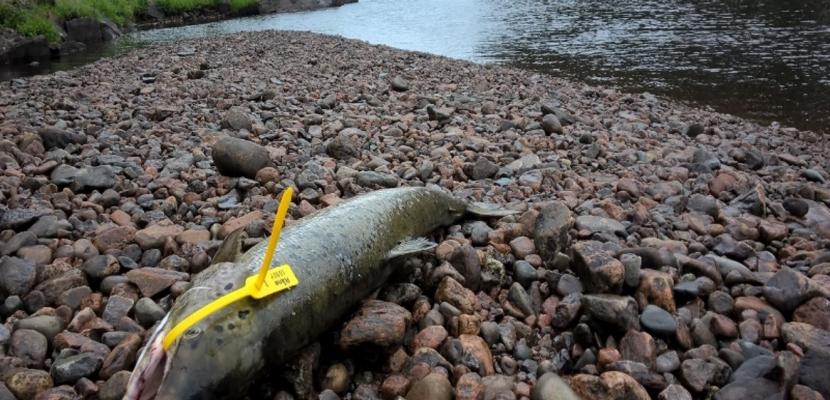Image

Tag your out. New methods in sport-fisheries create sustainable catch levels of wild salmon.
Published on 15 September 2021

Sweden
Övre Norrland
This is the good practice's implementation level. It can be national, regional or local.
About this good practice
Due to overfishing, migration barriers and industrial pollution only 27 of the original 80 wild salmon populations in the Baltic Sea now exist. Now thanks to better water quality, river restoration and changes in fisheries management technique most salmon rivers are now slowly recovering, and EU citizens can once again witness wild salmon jumping during their upstream migration. The growth of wild salmon has led to the increasing popularity of sport fishing and while this is good for regional economic growth those responsible for fisheries management must ensure the continued growth of stocks and that the numbers of fish being harvested is sustainable.
While most anglers now utilize catch and live release of salmon and have as a goal to hold a fish for a few seconds before letting it go back to the wild some anglers still wish to take home a fish for dinner. The fisheries manager (Norrbotten County Administration Board) has therefore had to become far more sophisticated and adaptive in its management of salmon rivers.
We have therefore developed a tag system where salmon anglers can only harvest a maximum number of fish per year and must report digitally their catch. We therefore can guarantee that numbers of fish taken in the Lainio river are at a sustainable level and thereby simultaneously allow an economically important activity, sport fishing to grow. This combination of tags and a digital reporting system for sport fishing for salmon is unique to Europe.
While most anglers now utilize catch and live release of salmon and have as a goal to hold a fish for a few seconds before letting it go back to the wild some anglers still wish to take home a fish for dinner. The fisheries manager (Norrbotten County Administration Board) has therefore had to become far more sophisticated and adaptive in its management of salmon rivers.
We have therefore developed a tag system where salmon anglers can only harvest a maximum number of fish per year and must report digitally their catch. We therefore can guarantee that numbers of fish taken in the Lainio river are at a sustainable level and thereby simultaneously allow an economically important activity, sport fishing to grow. This combination of tags and a digital reporting system for sport fishing for salmon is unique to Europe.
Resources needed
A digital reporting system must be created and available on internet, the development cost was approx. 8 500 €. Numbered tags must be purchased yearly approx. 750 €. Point of sales staff must be educated in data input and total human resources utilised equated to approx. 15 days per annum.
Evidence of success
The practice has resulted in the collection of previously unavailable data concerning the exploitation of wild fish. Catch data is an essential tool for decision makers in fisheries conservation when choosing regulations for sport fishers to create a balance between resource usage and economic growth. Previous uncertainty about catch levels has resulted in suspicion and conflict between commercial, subsistence and sport fishers, clear data has led to more balanced dialogue between stakeholders.
Potential for learning or transfer
Regions that have a fisheries resource without clear quantifiable data on catch removals may be interested in our theme. Managers and decision makers in fisheries management can easily apply our techniques to guarantee sustainable catch levels of all kinds of wild fish. Our tool will also ease fisheries control as it can be used to see how many daily fishing licenses are sold and thereby the need to carry out control activities. Key to applying our technique is:
1. A sales system where tags can be physically purchased.
2. A permit to collect data from fishers including telephone numbers and home address.
3. The ability to utilize traditional paper forms if fishers are not digitally prepared or aware as can be the case with older citizens.
The above three measures must be utilised for a successfull transfer of learning to be achieved.
1. A sales system where tags can be physically purchased.
2. A permit to collect data from fishers including telephone numbers and home address.
3. The ability to utilize traditional paper forms if fishers are not digitally prepared or aware as can be the case with older citizens.
The above three measures must be utilised for a successfull transfer of learning to be achieved.
Good practice owner
You can contact the good practice owner below for more detailed information.
Organisation
County Administrative Board of Norrbotten

Sweden
Övre Norrland
Contact
Regional Project Co-ordinator
